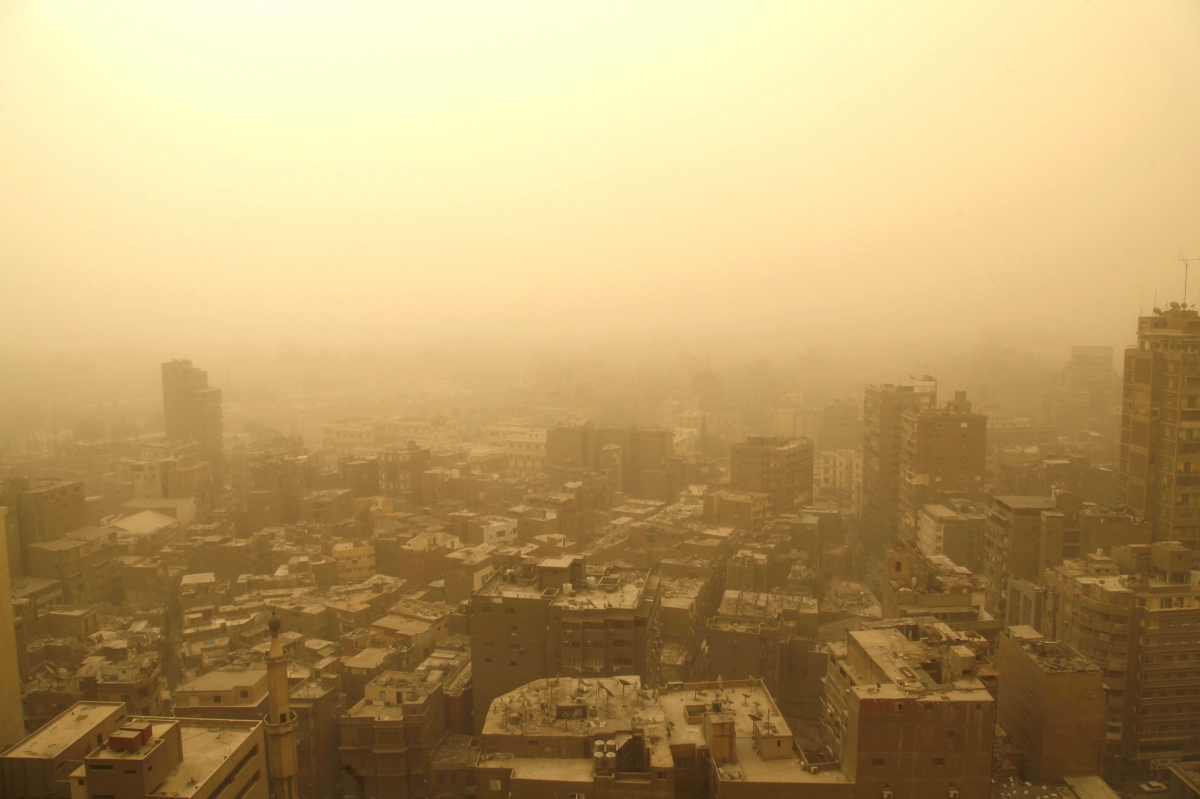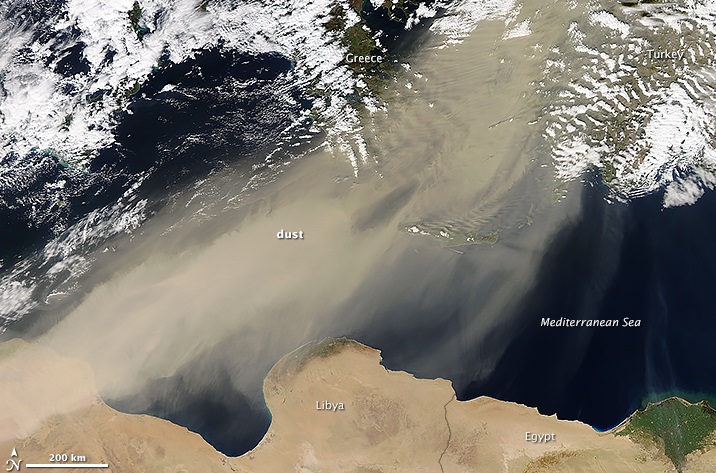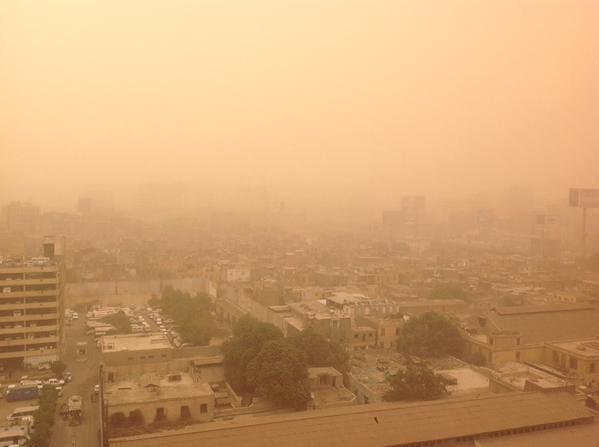Much of the Middle East, reeling under conflict, is caught in the centre of a new storm, literally.
A deadly sandstorm has descended on several countries in the region, brought on by a cyclone that crossed Africa's Atlas Mountains, pushing dust clouds from the Sahara Desert as far as Turkey.
The 'cloud of dust' moving from the Sahara Desert was caught on NASA's satellite at the beginning of the month.
NASA scientists have said that both, the timing and the intensity of the storm, were 'unusual', given that such high concentrations of dust particles so far away from the source was rare, and that such storms largely occurred during spring time.
Having already shrouded Egypt and Turkey for three days, the storm also reached Israel and Lebanon on Wednesday, according to The Associated Press.
Israel's Environmental protection Ministry also reported that the storm was the biggest to hit it in four years.
The storm and the winds also brought strong waves to the coast, forcing Egypt to close two of its seaports, and even shutting the Suez Canal.
Twitterati from Egypt, Jordan, Israel and other nations in the region posted photos of the sandstorm, showing little visibility and clouds of yellow dust hanging in the air over buildings.
Big sandstorm sweeping through Cairo. Dust sticks to skin, all colors fade to beige. pic.twitter.com/vdqrTm9AVg
— Louisa Loveluck (@leloveluck) February 11, 2015
As if being in displacement is not hard enough: High winds causing sandstorm & huge dust clouds over #Zaatari this pm pic.twitter.com/kvoKUftJsv — Za'atari Camp (@ZaatariCamp) February 10, 2015
Photos of the powerful sandstorm causing mayhem in the Middle East http://t.co/yIl47ADs6A pic.twitter.com/WuHPkIeLxp
— HuffPost India (@HuffPostIndia) February 12, 2015
Several Twitterati added some political humour to describe the storm, linking it to Russian President Vladimir Putin's recent visit to Egypt, and new Saudi King Salman's push for stronger ties with Egypt.
You can't complain about the sandstorm in Egypt, it's a side effect of the strengthening ties with Saudi Arabia.
— Karl Sharro (@KarlreMarks) February 11, 2015
Things You Missed In #Egypt Because Of The Sandstorm: Putin riding a camel topless. http://t.co/Mlf2oroEr7 pic.twitter.com/GEgN3Xja7L — CairoScene.com (@CairoScene) February 11, 2015
On 4th anniversary of his ouster, the pharaoh Mubarak sends an apocalyptic sandstorm to Egypt to show his displeasure pic.twitter.com/UC6lgzOaHP
— Sharif Kouddous (@sharifkouddous) February 11, 2015
It's sand, so sand, such a sand, sand situation in #Cairo, #Egypt pic.twitter.com/gE0xW9uPUd
— Borzou Daragahi (@borzou) February 11, 2015
In Iran, people took to Twitter with the hashtag #KhouzestanCantBreath, sharing pictures of masked locals walking through the storm.
#اهواز #KhuzestanCantBreath pic.twitter.com/tPp8SI6Igf
— امیرر (@amirrmte) February 8, 2015
بهترین و حرفهای ترین تصاویری که از قضایای خوزستان دیدم. http://t.co/8AN0mrMjyx #KhuzestanCantBreath pic.twitter.com/ddA1aQlGSQ — Mardetanha (@Mardetanha) February 9, 2015
Some shared 'before-and-after' photos as the sandstorm obscured visibility.
@TamerELG @ahmed هذا المنظر من غرفتي في الفندق الفرق يومين. pic.twitter.com/oQkKqDZojn
— دلع المفتي (@dalaaalmoufti) February 11, 2015
Cairo today vs Cairo normally. The dust and wind are really real. pic.twitter.com/oBCiHb5q9R — Tamer El-Ghobashy (@TamerELG) February 11, 2015




















